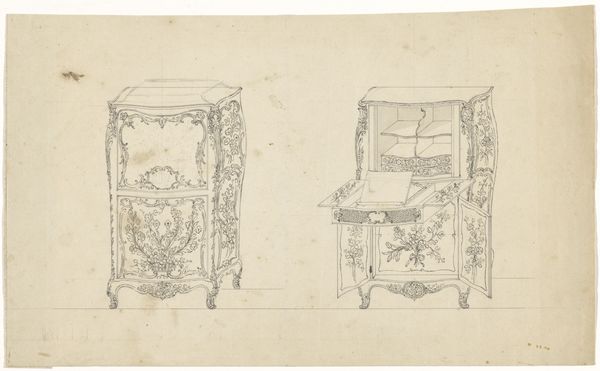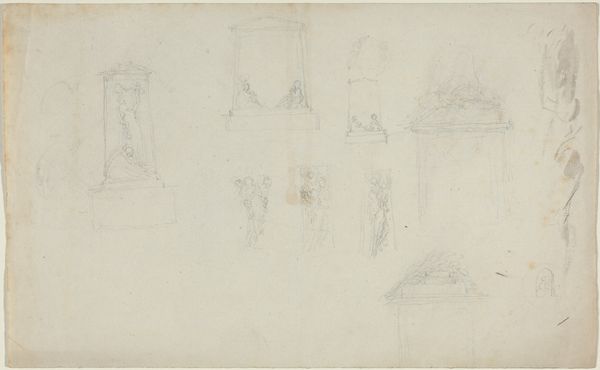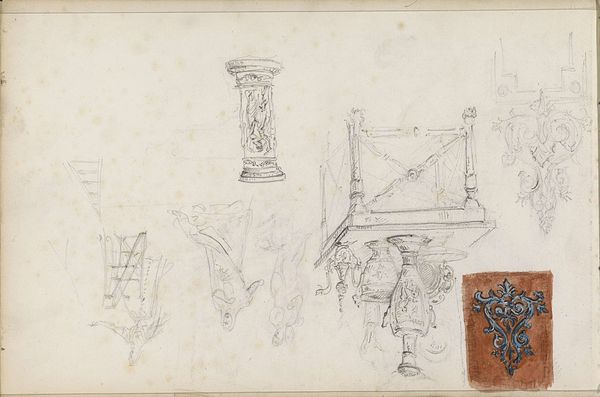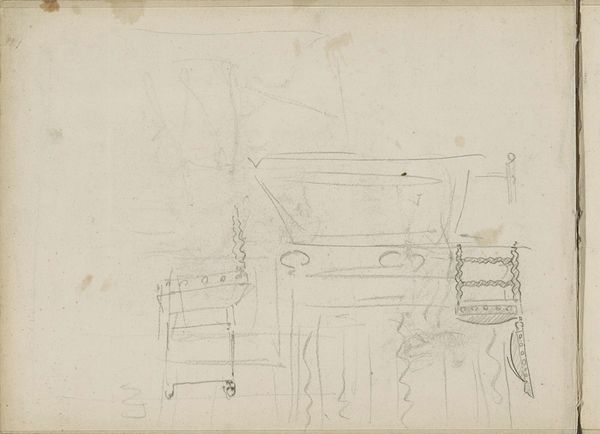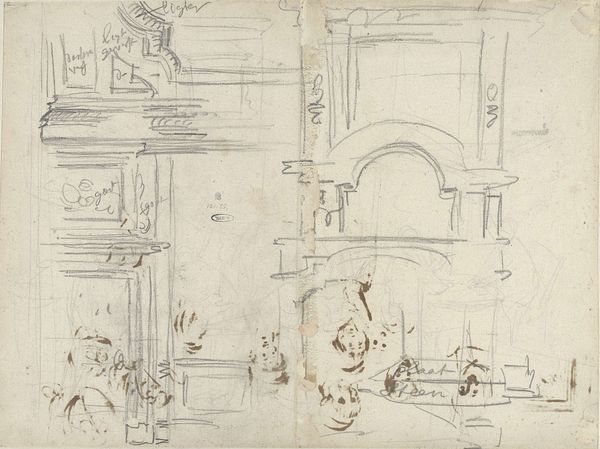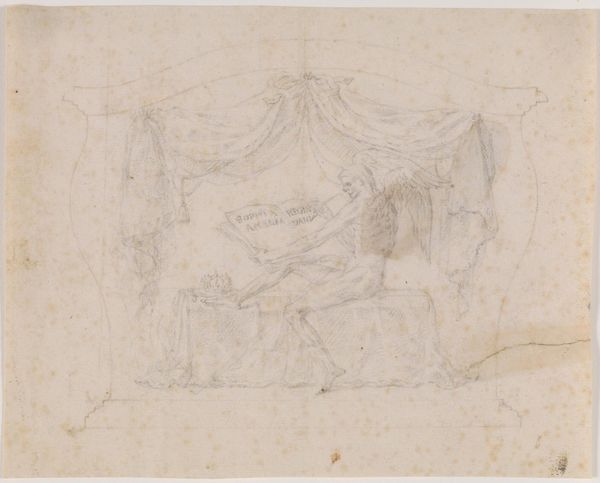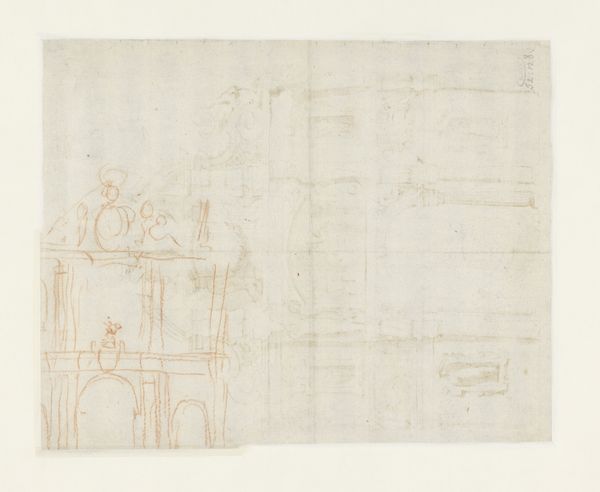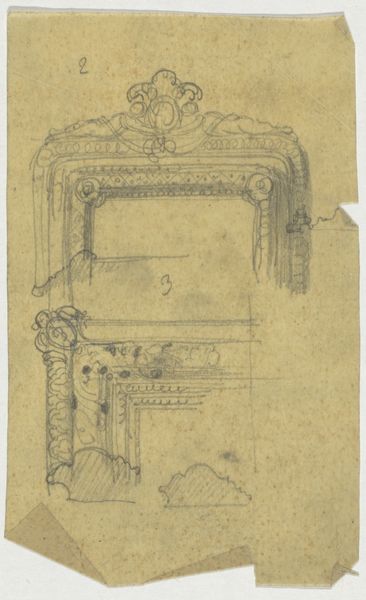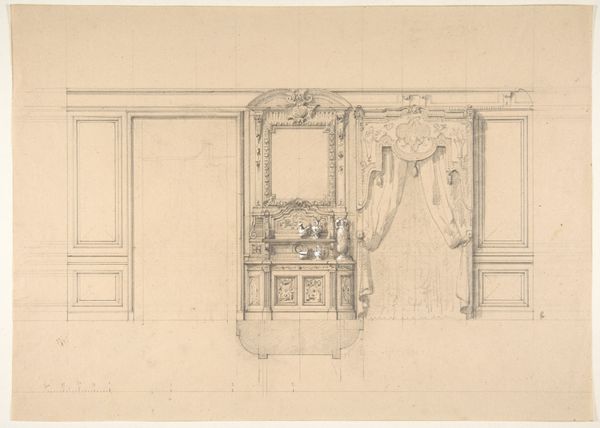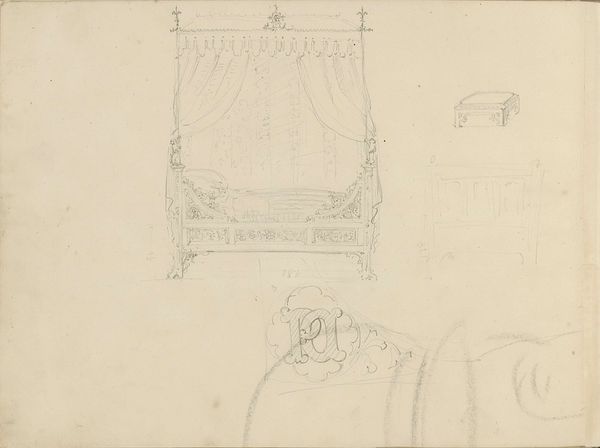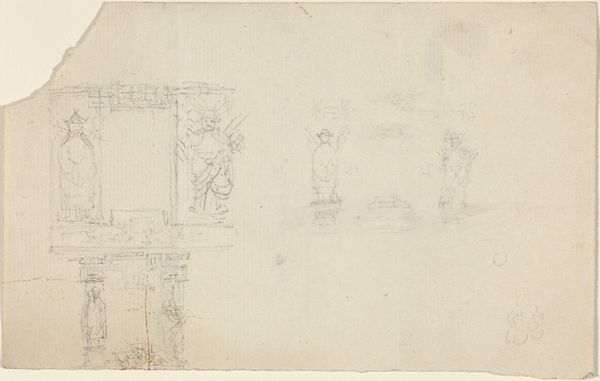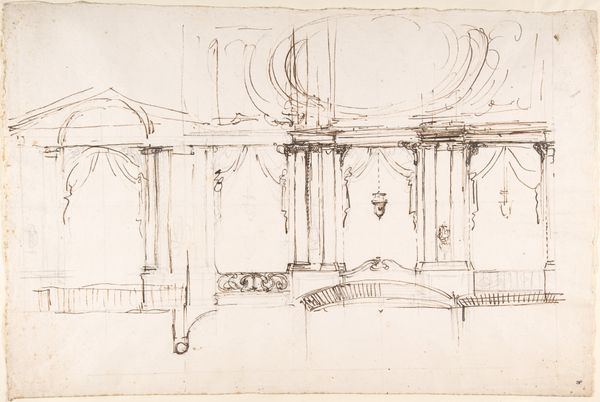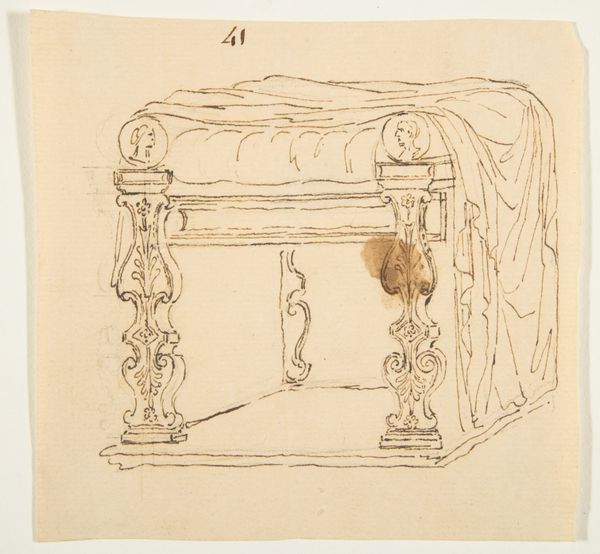![Designs for Monuments [recto and verso] by John Flaxman](/_next/image?url=https%3A%2F%2Fd2w8kbdekdi1gv.cloudfront.net%2FeyJidWNrZXQiOiAiYXJ0ZXJhLWltYWdlcy1idWNrZXQiLCAia2V5IjogImFydHdvcmtzL2I2OTVkZDBlLWM0YjUtNDNkMi1iMzRiLWE3ZjBjMDM5OWZhZS9iNjk1ZGQwZS1jNGI1LTQzZDItYjM0Yi1hN2YwYzAzOTlmYWVfZnVsbC5qcGciLCAiZWRpdHMiOiB7InJlc2l6ZSI6IHsid2lkdGgiOiAxOTIwLCAiaGVpZ2h0IjogMTkyMCwgImZpdCI6ICJpbnNpZGUifX19&w=3840&q=75)
drawing, pencil, architecture
#
drawing
#
neoclacissism
#
etching
#
form
#
pencil
#
line
#
architecture
Dimensions: overall: 12.1 x 16 cm (4 3/4 x 6 5/16 in.)
Copyright: National Gallery of Art: CC0 1.0
Curator: This drawing, titled "Designs for Monuments [recto and verso]," attributed to John Flaxman, offers a glimpse into the conceptual stage of Neoclassical architecture. The delicate pencil lines hint at grand structures, emphasizing form and classical ideals. Editor: My first thought is "ghostly." These sketches feel more like apparitions of monuments rather than solid, enduring structures. It really makes you think about the transient nature of power and memory. Curator: Flaxman’s commitment to line and simplified forms is clear, reflecting the influence of classical sculpture and architecture. One sees echoes of Greek temples and Roman triumphal arches here. In his time, these designs would have symbolized civic virtue and enduring legacy, reflecting the power structures of the British Empire. Editor: And it’s hard to ignore the implications of monument design in a broader socio-political context. Who gets a monument, and who decides? How does architecture then uphold societal values? It always sparks the conversation about whose history is memorialized and whose is actively erased. Curator: The meticulous detailing of each frame, complete with small human figures, hints at the scale and significance intended for these monuments. Note how these design elements create a sense of harmony and order. This would surely provide visual anchors for emerging concepts of nationhood and identity. Editor: Looking at the arrangement on the page, I see more than just design; it reads like a statement, questioning what purpose these spaces might have served. Were these envisioned to unite or to reinforce societal hierarchies, particularly concerning the access to power? Curator: Precisely. The monument as a locus of national identity and historical narrative is powerful indeed, particularly in a nation seeking a narrative in visual culture. Editor: This really pushes us to rethink what a monument represents in current society and how we can ensure we provide true and balanced representation of both our past and the communities making changes now. Curator: It certainly shows Flaxman's considerations for architecture as a potent tool, designed as well as deployed, to legitimize state values. Editor: I agree. Pushing conversations about our values. I now see these not just as concepts, but also reminders to reassess societal values.
Comments
No comments
Be the first to comment and join the conversation on the ultimate creative platform.

